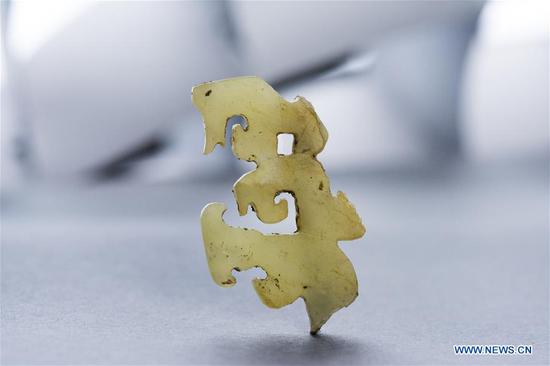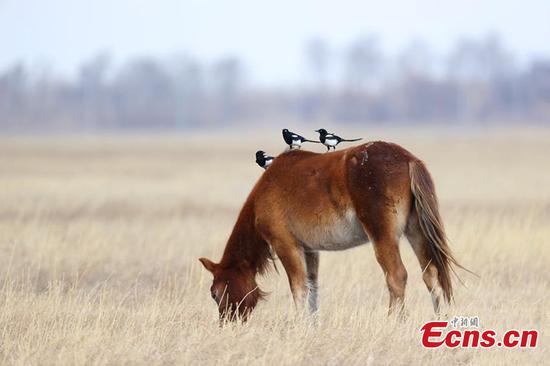
A drone sows rice seeds in Shuikou Township of Kaiping, south China's Guangdong Province, Feb. 26, 2020. (Xinhua/Mao Siqian)
Chinese researchers have discovered that a gene can determine grain width and weight in rice and be used to develop high-yielding rice cultivars, according to a report by the Science and Technology Daily Tuesday.
The research published in New Phytologist was jointly carried out by the China National Rice Research Institute (CNRRI) and the Agricultural Genomics Institute at the Shenzhen Chinese Academy of Agricultural Sciences.
The yield of rice is mainly determined by its effective panicle number, grain number per panicle and grain weight, which also affect the appearance and commercial value of rice, said Gao Zhenyu, a researcher from the CNRRI.
Based on the recombinant inbred line and high-resolution genetic map of super hybrid rice, the research team identified a gene, TGW2.
The study found that in some rice cultivars, the expression of TGW2 is high, leading to an alteration in grain width and weight by influencing cell proliferation and expansion in glumes.
Further analysis showed that when TGW2 reacts with KRP1, a regulator of cell cycles in plants, it can negatively regulate grain width and weight.
The findings provide new insights into the genetic mechanism underlying grain morphology and grain weight, and uncover a promising gene for improving rice yield.


















































